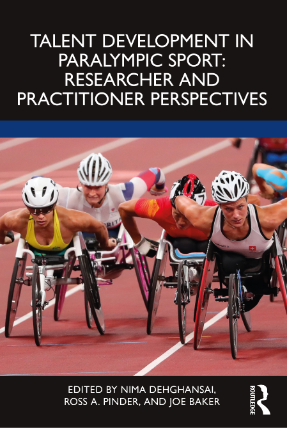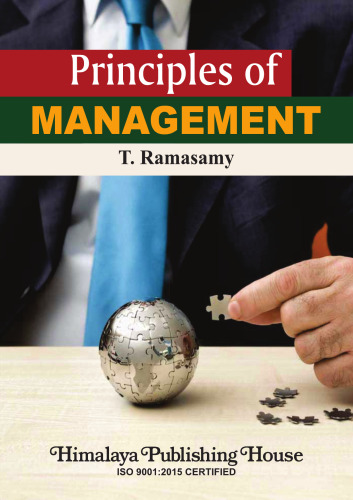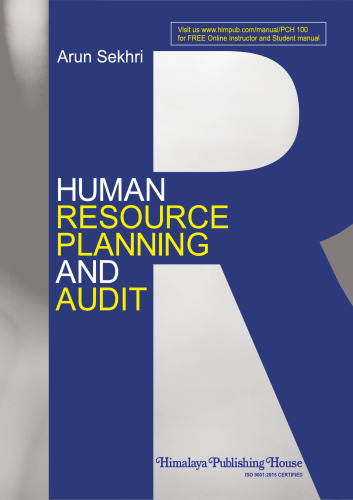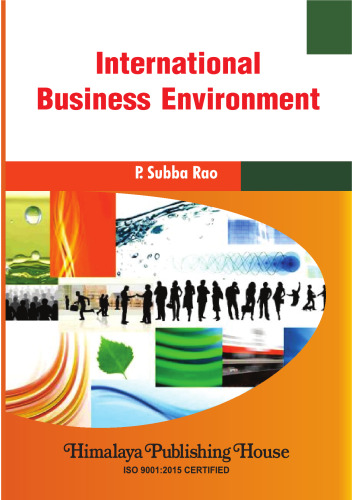was due to improved evacuation techniques and the invention of Penicillin, which thwarted catastrophic infections, and thus the lifespans of those with spinal cord injuries (SCI) improved dramatically. Thus, rehabilitation took on greater importance and sport was seen to encourage and facilitate a ‘return’ to society in a more enjoyable and impactful way. Sport compe- titions were held at Rehabilitation hospitals globally with perhaps the most famous being in Stoke Mandeville, United Kingdom. Here the physiatrist and neuro-surgeon Dr. Ludwig Guttmann hosted an archery competition on the hospital’s lawn for 11 war veterans with spinal injuries the same day as the opening ceremony was held for the London 1948 Olympic Games. Guttmann noted that he hoped to one day see this competition evolve into an Olympic-style Games for those with spinal injuries. Twelve years later in Rome in 1960 that dream became a reality. Originally, the focus of the Paralympic Games was only for those with spinal injuries. Over time, other impairment types were included such as visual impairment, cerebral palsy, and amputations. For example, the first Paralympic Games in 1960 in Rome included only those with SCI but today the Paralympics welcomes ten different impairment types. While the Paralympic Games were at times held in the same country as the Olympic Games, it was not until the 1988 Games in Seoul, Korea that both Games were held in the same city. This practice has remained for both Summer and Winter Paralympic Games and following an agreement signed in 2000 between the International Olympic Committee (IOC) and International Paralympic Committee (IPC), hosting both Games in the same city is now a requirement for bidding. The evolution of the Paralympic Games has thus been reflected and influenced by athlete pathways. Perhaps this is best understood using three relatively distinct periods as defined by Legg and Steadward (2011). The first is ‘burgeoning awareness’ which ranges roughly from the Stoke Mandeville Games in the late 1940s to the mid-1980s prior to the Games in Korea. The second era is the ‘rise to prominence’ ranging from the 1988 Paralympic Games to the early 2000s when the first official contract was signed between the IOC and IPC. The final period is ‘transcendence’ which reflects the period following the Summer Paralympic Games held in 2000 in Sydney, Australia to the present (Legg & Steadward, 2011). Burgeoning awareness saw sport for persons with impairments from a purely medical and rehabilitation focus. Here, the purpose of sport was to enable or accelerate the integration of persons with impairments into a non- disabledsociety. Athlete pathways were rehabilitation focused and athletes often competed in multiple sports at any major Games. Rise to prominence then saw the growth of the Paralympic movement organizationally and philosophically. Here was a shift from medical, patient, and disability- based competitions that originated at hospitals, such as Stoke Mandeville, 8 David Legg et al. to sport, and athlete-based competitions leading to the creation of the International Paralympic Committee in 1989 (Legg & Steadward, 2011). The pathway systems in some of the contexts during this era evolved with closer ties to the non-disabled sport system where athletes were recruited for and trained for specific sports. Transcendence then saw the integration of athletes with impairments into sport organizations and movements for those who were non-disabled. This occurred at the local, state, national, and international levels including the relationships between the IPC and IOC. In some contexts, the athlete development pathway system also evolved to mimic more closely the non-disabled sport system. This stage is now continuing to evolve with questions related to who can compete in which Games and what constitutes a minimal disability necessitating par- ticipation in a disability sport context. The Paralympic Games has thus come a long way in a relatively short period of time. The Games in its entirety is just over 70 years old and the modern Games, post-1988 is just over 30 years old. The athlete develop- ment pathways have also evolved in varying ways depending on the context and we will now review issues facing these pathways systems, noting challenges and opportunities within two different contexts and issues that must be addressed for the future. By recognizing the diversity among the various approaches, we can hopefully better understand the importance of context, the implications for athlete performance, and what pathways may be best for a certain region. In each case, authors with lived experiences will review the pathways noting both strengths and opportunities for change. Characteristics of Para athlete development pathways First, we will review a series of issues of athlete pathways. The focus here will be on recent research on Paralympic pathways from grassroots parti- cipation to elite sporting success and informed by the views of primary stakeholders including Para athletes, Para coaches, and policymakers (coaches, directors, etc.). Pankowiak (2020) and Patatas (2019), argue that Para athletes’ pathways, should take a multi-level approach to individual development, by high- lighting intrapersonal, interpersonal, organizational, and socio-cultural fac- tors influencing Para athlete development. Their analysis is informed by the developmental phases of athlete development as employed in the Patatas et al. (2020, 2022, 2021) studies: attraction, retention, competition, talent identification and development, elite performance, and (voluntary and in- voluntary) retirement. There is also growing evidence that athletes with different types and severity of impairments experience significant differences in their develop- mental trajectories throughout their athletic pathway (Dehghansai et al., Paralympic pathways 9
چکیده فارسی
به دلیل بهبود تکنیکهای تخلیه و اختراع پنیسیلین بود که عفونتهای فاجعهبار را خنثی کرد و بنابراین طول عمر افراد مبتلا به آسیب نخاعی (SCI) به طور چشمگیری بهبود یافت. بنابراین، توانبخشی اهمیت بیشتری پیدا کرد و ورزش برای تشویق و تسهیل "بازگشت" به جامعه به شیوه ای لذت بخش تر و تاثیرگذارتر دیده شد. مسابقات ورزشی در بیمارستانهای توانبخشی در سطح جهان برگزار شد که شاید معروفترین آن در استوک ماندویل، بریتانیا بود. در اینجا، فیزیاتر و جراح مغز و اعصاب، دکتر لودویگ گاتمن، میزبان مسابقه تیراندازی با کمان در زمین چمن بیمارستان برای 11 جانباز جنگ با آسیب نخاعی بود، همان روزی که مراسم افتتاحیه بازی های المپیک 1948 لندن برگزار شد. گاتمن خاطرنشان کرد که امیدوار است روزی شاهد تبدیل این مسابقات به یک بازی المپیکی برای کسانی باشد که آسیب نخاعی دارند. دوازده سال بعد در رم در سال 1960 این رویا به واقعیت تبدیل شد. در اصل، تمرکز بازی های پارالمپیک فقط برای کسانی بود که آسیب های ستون فقرات داشتند. با گذشت زمان، انواع دیگر اختلالات مانند اختلال بینایی، فلج مغزی و قطع عضو نیز شامل شدند. به عنوان مثال، اولین بازیهای پارالمپیک در سال 1960 در رم فقط شامل آنهایی بود که SCI داشتند، اما امروزه پارالمپیک از ده نوع اختلال مختلف استقبال میکند. در حالی که بازیهای پارالمپیک در مواقعی در همان کشوری برگزار میشد که بازیهای المپیک برگزار میشد، تا بازیهای 1988 در سئول، کره، هر دو بازی در یک شهر برگزار نشدند. این رویه برای بازیهای پارالمپیک تابستانی و زمستانی باقی مانده است و پس از توافقنامهای که در سال 2000 بین کمیته بینالمللی المپیک (IOC) و کمیته بینالمللی پارالمپیک (IPC) امضا شد، میزبانی هر دو بازی در یک شهر در حال حاضر برای مناقصه الزامی است. بنابراین تکامل بازی های پارالمپیک تحت تأثیر مسیرهای ورزشکاران منعکس شده است. شاید این به بهترین شکل با استفاده از سه دوره نسبتاً متمایز که توسط Legg و Steadward (2011) تعریف شده است، درک شود. اولین مورد «آگاهی رو به رشد» است که تقریباً از بازیهای استوک ماندویل در اواخر دهه 1940 تا اواسط دهه 1980 قبل از بازیهای کره را شامل میشود. دوره دوم «برجستگی» است که از بازیهای پارالمپیک 1988 تا اوایل دهه 2000 را شامل میشود، زمانی که اولین قرارداد رسمی بین IOC و IPC امضا شد. دوره پایانی «تعالی» است که بازتاب دوره پس از بازیهای پارالمپیک تابستانی در سال 2000 در سیدنی، استرالیا تا به امروز است (لگ و استودوارد، 2011). آگاهی روزافزون، ورزش را برای افراد دارای معلولیت صرفاً از محورهای پزشکی و توانبخشی دید. در اینجا، هدف ورزش فعال کردن یا تسریع ادغام افراد دارای معلولیت در یک جامعه غیر معلول بود. مسیرهای ورزشکاران متمرکز بر توانبخشی بود و ورزشکاران اغلب در چندین رشته ورزشی در هر بازی اصلی به رقابت پرداختند. به شهرت رسید و سپس شاهد رشد جنبش پارالمپیک از نظر سازمانی و فلسفی بود. در اینجا تغییری از مسابقات پزشکی، بیماران و معلولیتها صورت گرفت که در بیمارستانها، مانند استوک ماندویل، 8 دیوید لگ و همکاران، سرچشمه گرفت. به ورزش و مسابقات مبتنی بر ورزشکار که منجر به ایجاد کمیته بین المللی پارالمپیک در سال 1989 شد (لگ و استیدوارد، 2011). سیستمهای مسیر در برخی از زمینهها در طول این دوره با پیوندهای نزدیکتر با سیستم ورزشی غیرمعلول که در آن ورزشکاران برای ورزشهای خاص استخدام شده و آموزش میدیدند، تکامل یافتند. پس از آن Transcendence شاهد ادغام ورزشکاران دارای نقص در سازمان های ورزشی و جنبش های افراد غیر معلول بود. این در سطوح محلی، ایالتی، ملی و بین المللی از جمله روابط بین IPC و IOC رخ داد. در برخی زمینهها، سیستم مسیر توسعه ورزشکاران نیز برای تقلید دقیقتر از سیستم ورزشی غیرمعلول تکامل یافته است. این مرحله اکنون با سؤالات مربوط به اینکه چه کسی میتواند در کدام بازیها شرکت کند و چه چیزی حداقل معلولیتی را که نیاز به شرکت در زمینه ورزش معلولیت دارد، به تکامل خود ادامه میدهد. بنابراین بازی های پارالمپیک در مدت زمان نسبتاً کوتاهی راه درازی را پیموده است. قدمت کلی بازیها کمی بیش از 70 سال است و بازیهای مدرن پس از 1988 کمی بیش از 30 سال قدمت دارند. مسیرهای توسعه ورزشکاران نیز بسته به زمینه به روشهای مختلفی تکامل یافتهاند و ما اکنون مسائلی را که با این سیستمهای مسیر مواجه هستند، بررسی میکنیم، چالشها و فرصتها را در دو زمینه مختلف و مسائلی که باید برای آینده مورد توجه قرار گیرند، اشاره میکنیم. با تشخیص تنوع در بین رویکردهای مختلف، امیدواریم بتوانیم اهمیت زمینه، پیامدهای عملکرد ورزشکاران و بهترین مسیرها را برای یک منطقه خاص بهتر درک کنیم. در هر مورد، نویسندگانی با تجربیات زیسته، مسیرها را با توجه به نقاط قوت و فرصتهای تغییر مرور میکنند. ویژگی های مسیرهای توسعه پارا ورزشکار ابتدا یک سری مسائل از مسیرهای ورزشکاران را بررسی می کنیم. تمرکز در اینجا بر روی تحقیقات اخیر در مورد مسیرهای پارالمپیک از مشارکت مردمی تا موفقیت ورزشی نخبگان خواهد بود و از دیدگاه سهامداران اصلی از جمله ورزشکاران پاراالمپیک، مربیان پاراالمپیک و سیاست گذاران (مربیان، مدیران و غیره) مطلع می شود. Pankowiak (2020) و Patatas (2019)، استدلال می کنند که مسیرهای ورزشکاران پارا ورزشکار، باید با برجسته کردن عوامل درون فردی، بین فردی، سازمانی و اجتماعی-فرهنگی مؤثر بر توسعه پارا ورزشکار، رویکردی چند سطحی به رشد فردی داشته باشد. تجزیه و تحلیل آنها توسط مراحل رشد توسعه ورزشکار همانطور که در Patatas و همکاران به کار گرفته شده است. (2020، 2022، 2021) مطالعات: جذب، حفظ، رقابت، شناسایی و توسعه استعداد، عملکرد نخبگان، و بازنشستگی (داوطلبانه و غیر ارادی). همچنین شواهد فزایندهای وجود دارد که نشان میدهد ورزشکاران با انواع مختلف و شدت اختلالات، تفاوتهای قابلتوجهی در مسیر رشد خود در طول مسیر ورزشی خود تجربه میکنند (دهقانسای و همکاران، مسیرهای پارالمپیک 9
ادامه ...
بستن ...
Cover image: ©Paralympics Australia. Photo courtesy of
Paralympics Australia
First published 2023
by Routledge
605 Third Avenue, New York, NY 10158
and by Routledge
4 Park Square, Milton Park, Abingdon, Oxon, OX14 4RN
Routledge is an imprint of the Taylor & Francis Group, an informa
business
© 2023 selection and editorial matter, Nima Dehghansai,
Ross A. Pinder, and Joe Baker; individual chapters, the contributors
The right of Nima Dehghansai, Ross A. Pinder, and Joe Baker to be
identified as the authors of the editorial material, and of the authors
for their individual chapters, has been asserted in accordance with
sections 77 and 78 of the Copyright, Designs and Patents Act 1988.
All rights reserved. No part of this book may be reprinted or
reproduced or utilised in any form or by any electronic, mechanical,
or other means, now known or hereafter invented, including
photocopying and recording, or in any information storage or
retrieval system, without permission in writing from the publishers.
Trademark notice: Product or corporate names may be trademarks or
registered trademarks, and are used only for identification and
explanation without intent to infringe.
Library of Congress Cataloguing-in-Publication Data
A catalog record for this title has been requested
ISBN: 978-1-032-02647-3 (hbk)
ISBN: 978-1-032-02646-6 (pbk)
ISBN: 978-1-003-18443-0 (ebk)
DOI: 10.4324/9781003184430
Typeset in Times New Roman
by MPS Limited, Dehradu
ادامه ...
بستن ...




![Our mission to the court of Marocco [Morocco] in 1880, under Sir John Drummond Hay - pdf Our mission to the court of Marocco [Morocco] in 1880, under Sir John Drummond Hay - pdf](https://dl.libsan.ir/images/1/12/112108724_694b9e9769312.jpg)





